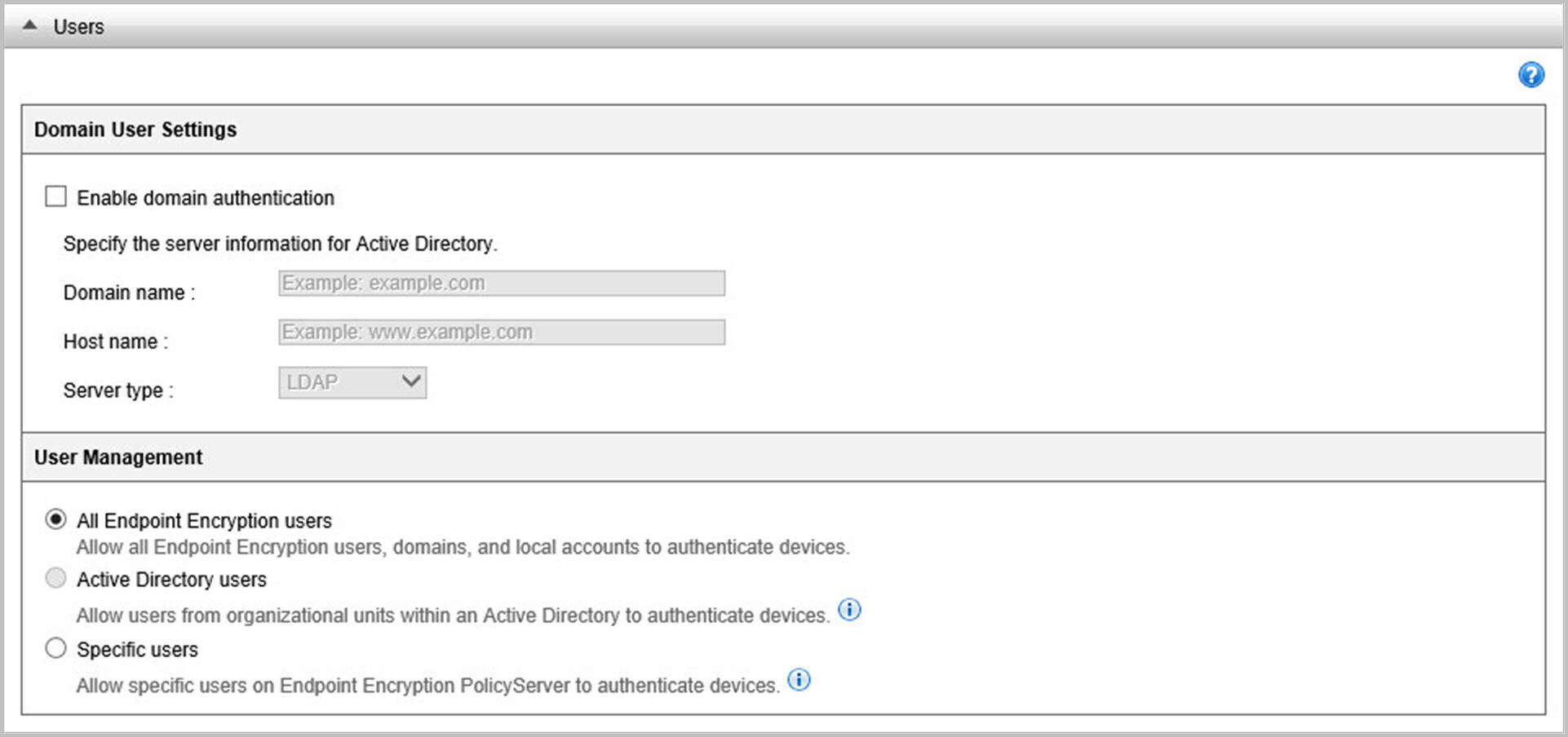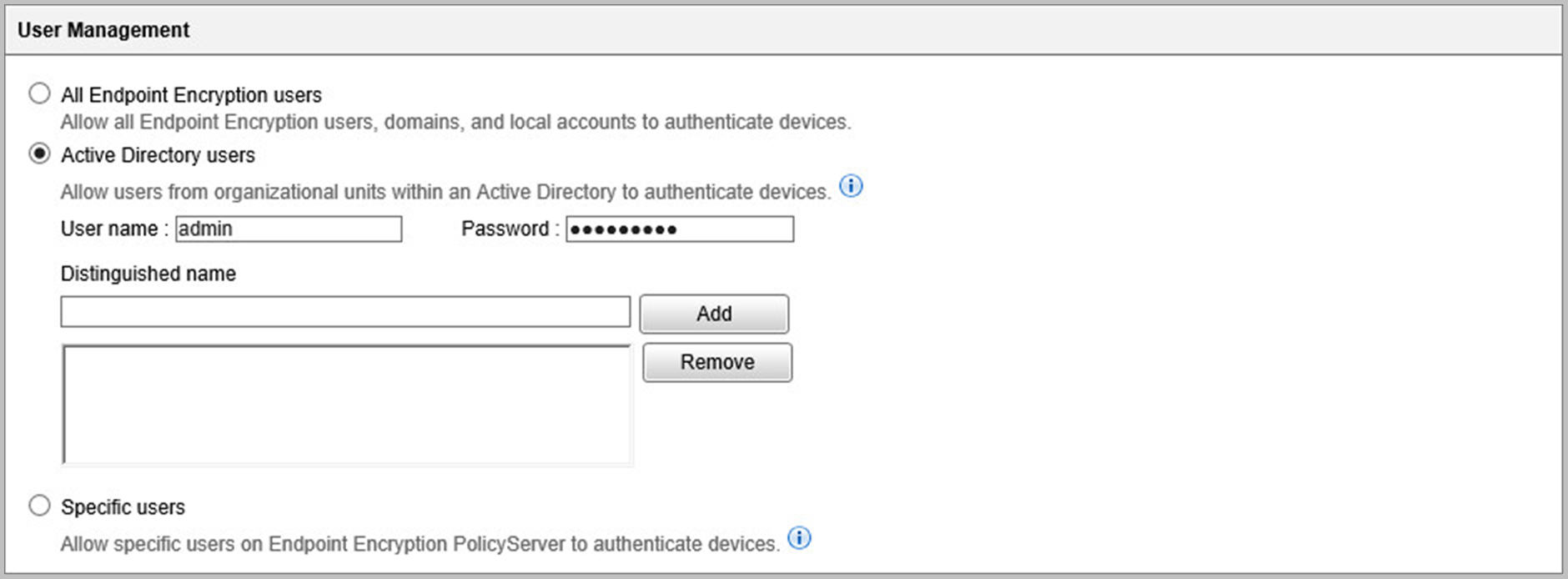|
|
|

| Option | Description | ||
|
All Endpoint Encryption users
|
Allow all users, domain and local accounts, to authenticate Endpoint Encryption devices.
|
||
|
Active Directory users
|
Allow users from organizational units (OUs) within an AD to
authenticate Endpoint Encryption
devices.
|
||
|
Select specific users
|
Specify which already added Endpoint Encryption users can
authenticate to managed endpoints.
|

| Option | Description | ||
|
User name
|
Specify your Active Directory user name.
|
||
|
Password
|
Specify your Active Directory password.
|
||
|
Distinguished name
|
Specify each OU by its sequence of relative distinguished names (RDN)
separated by commas.
Example: OU=TW, DC=mycompany, DC=com
After specifying the OU distinguished name, click
OK.
|